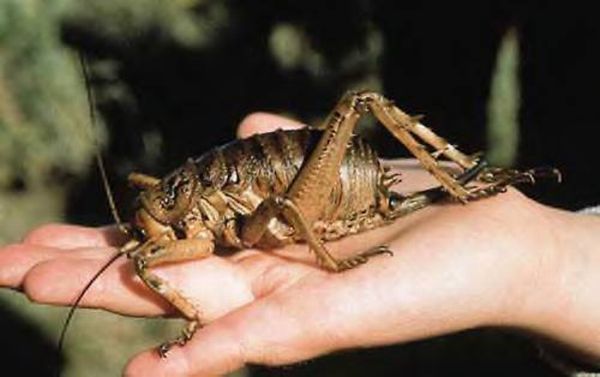|
|
Giant Weta
|
• Tusked weta
Tusked weta are distinctive because of the males having long curved tusks projecting forward from their jaws. The tusks are used to push an opponent; they are not used for biting. The females are similar to ground weta. Tusked weta are mainly carnivorous, eating worms and insects. They consist of three species: the Northland tusked weta Hemiandrus monstrosus, now named Anisoura nicobarica; the Middle Island tusked weta Motuweta isolata; and a newly-discovered Raukumara tusked weta, Motuweta riparia. The Northland tusked weta lives in tree holes similar to tree weta. The Middle Island tusked weta, also called the Mercury Island tusked weta after the islands on which it lives, was discovered in 1970. It is a ground-dwelling weta, covering its shallow burrows with leaves. The Middle Island weta is the most endangered weta species and a Department of Conservation breeding programme is establishing new colonies on other islands of the Mercury Island group. The Raukumara was discovered in 1996, in the Raukumara Range near the Bay of Plenty. There are probably more species still to be identified.
• Ground weta
Ground weta are classified in the genus Hemiandrus. There are about 40 species of ground weta in New Zealand and several very similar ones in Australia. They are also very like the Californian Cnemotettix—a similarity perhaps due to their very similar habits and habitat. Most of the Hemiandrus have not been described. They hide in burrows in the ground during the day and those that live in open ground (e.g., H. focalis) conceal the exit hole with a specially made perforated door. During the night ground weta hunt invertebrate prey and eat fruit.
|
|









